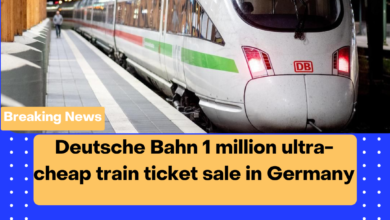Germany’s inflation is still being driven by rising food prices
Germany’s inflation is still being driven by rising food prices
Germany’s inflation has been declining over the previous few months, but fresh statistics show that shoppers are still experiencing price increases at the checkout. According to official data from the Federal Office of Statistics (Destatis), inflation in July was 6.2 per cent. This represents a modest decline from the June figure of 6.4 per cent and maintains this year’s decreasing trend in inflation. However, the cost of food is still significantly higher than it was a year ago, which is straining consumer budgets and causing the cost of living to rise more quickly than usual.
Food Costs Drive Germany’s Inflation Rise
-
- Between July 2022 and July 2023, food prices increased by an average of 11%, down from 13.7% in June.
- Over the past 12 months, notable increases observed across various food categories:
- Sugar, jam, honey, and confectionery: +18.9%
- Vegetables: +15.7%
- Fish, fish products, and seafood: +14.1%
- Bread and cereal items: +16.6%
- Edible fats and oils became 12.9% cheaper compared to a year ago due to improved supply chains post the Ukraine war.
- Destatis president Ruth Brand noted reduced but still high inflation, driven primarily by food prices.
Increase in energy costs
-
- German households grappling with record-high inflation, impacting purchasing power.
- Autumn saw an 8.8% increase in the cost of living, the highest since Germany’s unification.
- Annual inflation for the year measured at 7.9%.
- Energy prices, including petrol and oil, are major drivers of price hikes.
- Energy costs surged due to supply shortages from the epidemic and Russia’s Ukraine invasion.
- Destatis reported a 5.7% year-over-year rise in energy goods’ cost in July.
- Electricity prices surged by 17.6%, while natural gas prices increased by 8.5%.
- Petrol and diesel prices witnessed a 4.9% decrease compared to the previous year.
- A €9 ticket curtailed inflation in summer 2022, but this year’s €49 ticket has proven costlier.
In conclusion, Germany’s recent inflation trends reflect a decrease, yet food prices remain a significant driver of elevated costs. While some categories, notably edible fats and oils, have shown price reductions, the overall impact on consumer purchasing power continues to underscore the ongoing challenges posed by inflation.
Read more at How To Abroad:
German “experiment” with foreign tuition costs “comes to an end”
From Frankfurt, here are nine of the best day trips for just €49
Want to study in Germany? How To Abroad can help you achieve your academic dreams.








